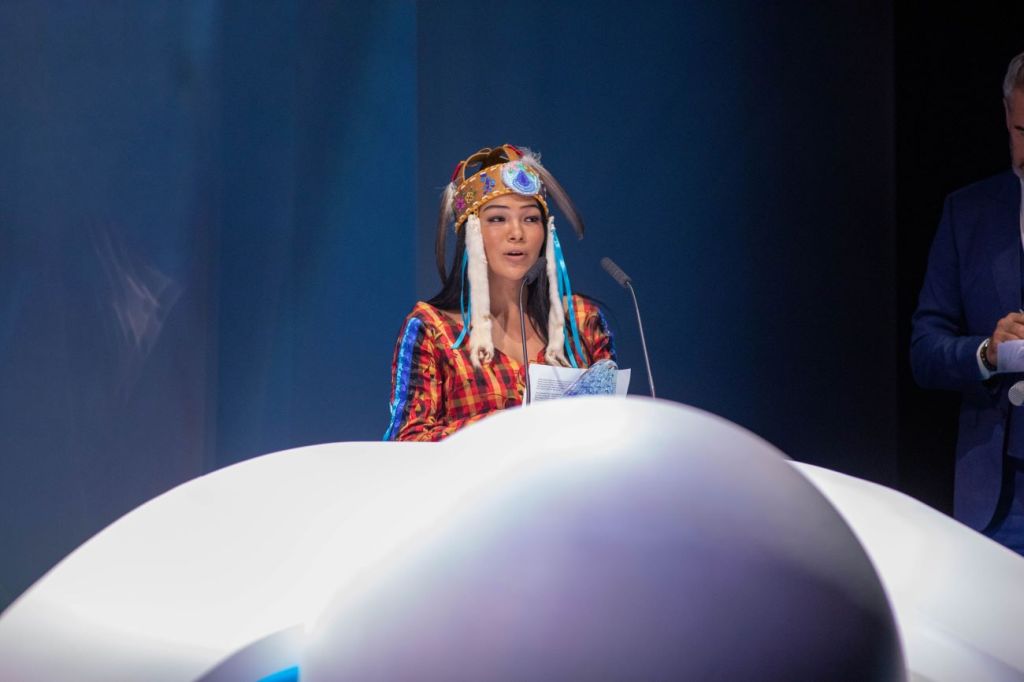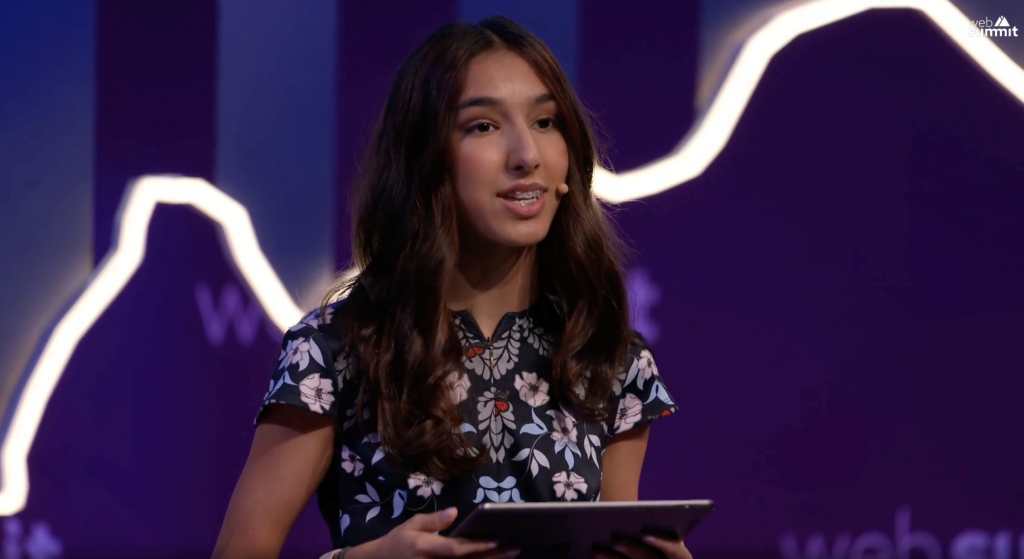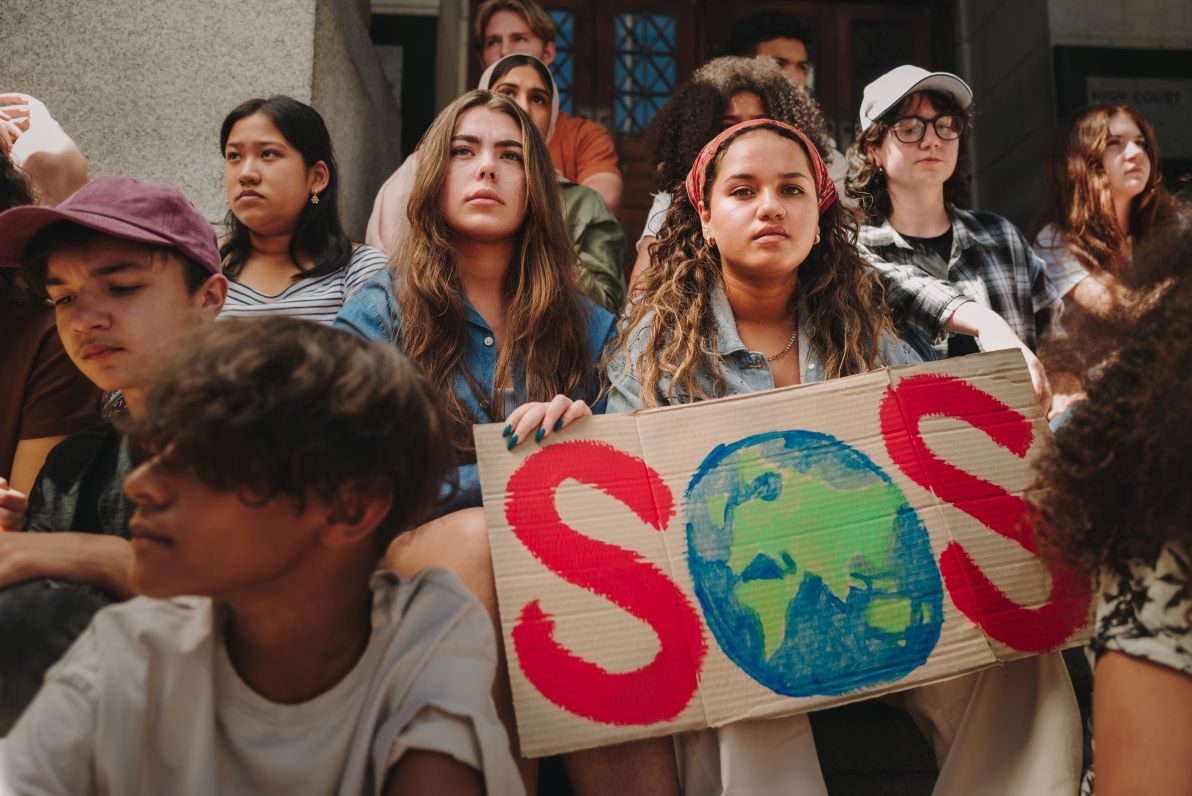When Greta Thunberg was 15 years old, the Stockholm-based teen sat in front of the Swedish parliament every Friday holding a handwritten sign that read “school strike for climate.”
Her demand? For governmental policy to align with the Paris Climate Agreement that aims to reduce worldwide greenhouse gas emissions and limit global temperature rises to 1.5°C.
Soon her solitary sit-in went viral and today her #FridaysForFuture movement that started in August 2018 has inspired youth around the world, including the Global Climate Strike that saw millions of kids and youth in 185 countries take to the streets to lend their voices to the fight.
While many kids and teens might feel voiceless, too young to vote and dismissed for their age, it’s today’s youth who will have to deal with the effects of climate change. Admittedly we know it can be daunting (even scary!) to teach kids about climate change, but open conversations can alleviate climate anxiety and provide kids with a sense of agency.
One easy way to inspire environmental action in your kids? Share stories of their activist peers, like these 10 Canadian teen climate activists who are taking their futures into their own hands.
8 young Canadians helping to fight climate change
While Greta is now a household name, she wasn’t the first teen to call for government leaders to address climate change. In 1992, then 12-year-old Severn Cullis-Suzuki, daughter of Canadian environmentalist and broadcaster David Suzuki, delivered a speech at the Rio Earth Summit pleading for delegates to take steps to preserve the planet.
Thirty years later, there is a new crop of young Canadian activists who are taking a stand against climate change and inspiring kids and teens to also make a difference:
1. Sophia Mathur
When she was just 11-years-old, Sudbury, Ont.-based Sophia Mathur discovered Greta’s viral YouTube videos and in November 2018 became Canada’s first climate striker as part of the Fridays For Future protest. Now she’s one of Canada’s most high-profile climate activists and Sophia is credited with bringing the movement to Canada.
Sophia is also one of seven youth applicants in a climate lawsuit against the Ontario government, which asserts that the province’s 2030 greenhouse gas emissions target is inadequate, unconstitutional and must be struck down. The government lost both a motion to strike down the lawsuit, and an appeal, making this the first time a Canadian court has ruled that climate change can threaten Canadians’ fundamental rights.
2. Sáj Starcevich
Dubbed “Saskatchewan’s Greta Thunberg,” Sáj Starcevich has been an activist for much of her young life. First she was a vegan involved in animal rights and more recently Sáj is fighting climate change. A member of the Carry the Kettle Nakoda Nation, she’s met with local government officials and attended Fridays For Future marches across Saskatchewan and Canada. In October 2019, Sáj became one of 15 young Canadians (ranging from 11 to 20) who launched a lawsuit against the Canadian government.
Their case alleged that the federal government violated their charter rights to life, liberty and security, and equality, since youth are disproportionately affected by the effects of the climate emergency. Unfortunately, the lawsuit was dismissed by the Federal Court.

3. Autumn Peltier
When she was eight years old, Autumn Peltier from Wiikwemkoong First Nation on Manitoulin Island, attended a ceremony at Serpent River First Nation where she noticed a sign warning about toxic water. Today, Autumn is a water-rights activist. At age 12, Autumn confronted Prime Minister Justin Trudeau at an Assembly of First Nations event on his environmental record and extracted a promise that he would “protect the water.”
Since then, Autumn has spoken at the United Nations World Water Day, been honoured by the Assembly of First Nations as a water protector, and was invited by the United Nations to Stockholm, Sweden, for World Water Week in 2018. Autumn continues to advocate for clean water access for Indigenous peoples and has emerged as a powerful voice in the climate movement. In 2019, she was named Chief Water commissioner for the Aniishnabek Nation.
Read more: Most interesting teen influencers.
4. Katia Bannister
Katia Bannister is a climate activist and community organizer from the Gulf Islands, B.C. She is a student at the University of Victoria where she plans to work in ethnoecology. Katia has worked and volunteered extensively for local environmental and social justice organizations, including the Cowichan Valley Earth Guardians.
Katia believes in the power of her voice and writing to catalyze change in the world. She also wants to inspire other youth to take action in their communities, develop their skills in leadership, and use their unique voices and talents to create the change they want to see now and in the future. Katia is a sought-after youth speaker, and avid blogger and storyteller behind Sowing Seeds for Change.
5. Sam Tierney
When Sam Tierney was 13 years old, the Pemberton B.C. resident had a tough time keeping his climate anxiety at bay. He’d read magazine articles about the enormity of climate change and lie awake all night with worry. Sam wrote to Mike Douglas, a vocal climate activist, chair of Protect Our Winters (POW) Canada and freeskiing legend. Mike was moved by the teen’s letter and wrote back almost immediately. His advice: action is the antidote to despair.
Sam responded by joining POW, then organized a petition calling for more youth involvement in his town’s climate action plan. Sam and a group of students delivered the petition to the Mayor by hand. Then Mike invited the teen to weekly ski meetups where they could talk about climate, skiing, and life—with a film crew in tow. Mike captured those meetups in the 30-minute short film Sam & Me, with the goal to help others jumpstart their own personal climate advocacy journeys.

6. Naila Moloo
From a young age Ottawa-based Naila Moloo has wanted to help end our global consumption of fossil fuels. She’s passionate about solar energy, having designed a transparent and flexible solar cell using silver nanowires. Naila is also currently developing a bioplastic from duckweed through an internship at Pond Biomaterials. She’s co-host of The Curiosity Podcast, which is about equipping young people with the skills they need to thrive in the future, and spoken across global stages.
Naila was the youngest recipient of Canada’s Top 100 Most Powerful Women and earlier this year was named one of Canada’s Top 25 Under 25 Environmentalists.
Read more: Meet three trailblazing teens.
7. Kiya Bruno
Kiya Bruno is fiercely proud of her Indigenous heritage. At age 13, the teen from Samson Cree Nation in Maskwacis, Alberta, was the first person to perform the national anthem in Cree at a Toronto Blue Jays game in Toronto. (She’s since performed for Hockey Day in Canada and CBC The National’s Canada Day Special.) Kiya and her mother continue their efforts to foster awareness of environmental issues through an Indigenous perspective.
They recently launched their Indigenous-inspired apparel and clothing company Stay Rooted Apparel ᑲᓇᐁᐧᔨᐦᑌᑕᐣ ᒥᑐᓴᐠ to foster a connection with the land, culture, and language. With each purchase, five trees are planted to help combat climate change and 10 per cent of the company’s proceeds go towards providing clean drinking water to a First Nations family.
8. Ira Reinhart-Smith
Ira Reinhart-Smith witnessed firsthand the impact of rising tides and intense storms on Nova Scotian shorelines, as hurricanes have become statistically stronger and more frequent. As a result, he was among the 15 youths to file a lawsuit against the federal government. The ocean plays a big part in Ira’s activism due to concerns that rising temperatures will damage marine habitats.
Ira also lives in an area with one of the highest Lyme disease rates in Canada (a tick-borne illness made more prevalent with the warmer temperatures) and some of his friends and family have contracted the disease. He attended his first #FridaysForFuture rally in 2018 and now organizes rallies close to home.
How can kids help take care of the environment?
Gen Z are probably more climate-aware than any generation that has come before them. And research shows that youth are actually “wired” to push for change and think outside the box, according to Ilona Dougherty, co-creator and managing director of the Youth & Innovation Project at the University of Waterloo.
The first step starts with the simple adage: think globally, act locally. From at home, to school, to their community, here are some ways tweens and teens can reduce their carbon footprint, help care for their environment and fight climate change.
Ways kids can save the environment at home
- Explain the concept of reduce, reuse, and recycle for kids
- Growing a vegetable garden is tasty and shortens the food miles—the distance food travels before reaching the store—which, in turn, reduces CO2 emissions.
- Trees naturally absorb or sequester carbon, so planting a tree reduces greenhouse gas emissions and helps kids see the long-term investment in climate action.
- Turn off lights, TVs, and lower the thermostat—those little things add up!
- Research shows that dairy and meat consumption are contributors to climate change. Increasing your family’s plant-based eating (hello, Meatless Mondays!) is good for the planet and your health.
- Thrift for second-hand clothes. Not only does thrifting have environmental benefits, but it’s also a great way to express your personal style.
Ways students can make schools and classrooms more sustainable
- Help kids pack lunches using reusable containers and swap out single-use snacks for bulk items. All those plastic bags and cling wrap often end up in landfill, contributing to greenhouse gas emissions.
- Transportation is one of the largest sources of carbon emissions, so instead of driving to school, hop on a bike or walk to school.
- Starting a school environmental club can be a great way to bring like-minded youth together and amplify individual actions.
- The Fridays for Future strike actions have been going strong since 2018. Together kids and teens could read up on how to strike and reasons to strike.
Ways kids can help the environment in their neighbourhood and community
- Get involved in a local cleanup, like a Trash Bash or National CleanUp Day or just pick up trash in your neighbourhood park, ravine, or beach. It cultivates a connection to the earth and reminds kids and teens why it’s worth saving.
- Many environmental groups have local chapters and some have youth groups, such as the Sierra Youth Coalition.
- Look for local volunteer opportunities, such as those at Friends of the Earth. Climate Action Network Canada has a long list of its members, and the Green Action Centre provides a list of links for youth, as does ReTooling for Climate Change.
- On the international stage, UNICEF has created Voices of Youth, a platform for young advocates to offer inspiring and original insights on issues that matter to them, while the United Nations Climate Action page shares voices and stories from around the world. Amnesty International shares resources on climate justice.
- Kids and teens are social media savvy. Encourage them to use social media to influence climate change by becoming a “green influencer.” As they post, share and comment on others’ climate content they’re more likely to see their activist community grow.
Kids and youth are rising in unprecedented numbers around the world to call on governments to limit global warming. It’s a big ask, but as Greta says, “You are never too small to make a difference.” And that change towards a better future starts at home.
How we can use financial literacy as a tool for sustainable change
These inspiring young Canadian environmentalists are just a sample of the youth who are determined to make a change. They show us that no matter how old you are or where you come from, you can make a real difference in your community and even the world. We can learn a lot from their examples: if we come together and recognize the power of our collective action, we can create meaningful change.
Financial literacy is also an important part of helping kids understand how to take care of the environment. By having an understanding of the Canadian financial system, kids can learn the value of using sustainable practices and strategies, such as shopping second-hand at thrift stores, using energy-efficient appliances, or carpooling. Teaching kids about financial topics like investments, budgeting, and needs vs wants can empower them to make informed purchase decisions that benefit the environment, such as buying eco-friendly products, using renewable energy sources, and supporting sustainable businesses.
Download Mydoh and give your kids the tools they need to take charge of their financial future and create a more sustainable world.
This article offers general information only and is not intended as legal, financial or other professional advice. A professional advisor should be consulted regarding your specific situation. While the information presented is believed to be factual and current, its accuracy is not guaranteed and it should not be regarded as a complete analysis of the subjects discussed. All expressions of opinion reflect the judgment of the author(s) as of the date of publication and are subject to change. No endorsement of any third parties or their advice, opinions, information, products or services is expressly given or implied by Royal Bank of Canada or its affiliates.







